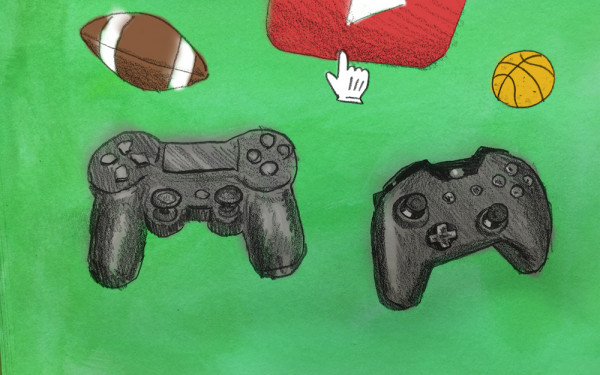Where statistics fail and eye tests prevail
Data and statistics cannot give the whole picture of a player’s performance
In the past few years, data analysis in sports has exploded and players’ statistics have been scrutinized more than ever.
Whether they are used to aggressively debate who is better between Lionel Messi and Cristiano Ronaldo under Instagram comments or to provide insightful analysis, everyone has had stats shoved in their faces to explain a player’s performance.
This popular tool, as useful as it may be, remains controversial in the sports scene. Instead, the eye test has gained prominence to judge players beyond statistics. It has also prompted a lively debate over whether the eye test or statistics better analyse a performance.
Statistics give factual numbers on certain information. There is no debate on Messi scoring 91 goals in a single year, nor on Lebron James registering the most points in NBA history.
Newer advanced statistics can even depict more obscure information such as the true shooting percentage, which adjusts the shooting percentage of basketball players depending on the positions they play in. In soccer, the expected goals statistic judges the number of goals a team should have scored depending on the quality of their shots.
However, stats don’t solve everything. Multiple sides of the game aren’t actively covered by statistics and, even if they are, they still need to be put in the context of the full match. They can also be manipulated toward a certain angle to make a player look better or worse than they actually are. Ronaldo didn’t score a single goal in his first 20 Champions League games; however, he was playing more as a creator than a scorer in his early career, and his scoring stats could not be compared with pure strikers.
On the other hand, the eye test doesn’t stop itself at numbers. I am an avid user of the eye test, but to do it properly, it is important to at least attempt to reduce pre-acquired ideas as much as possible. If you analyze a single player, you must follow them through the entire game and notice every single movement and micro-actions that aren’t shown in the statistics. In April 2021, West Ham United FC midfielder Jesse Lingard scored a brilliant solo goal against Wolves in the Premier League. However, what statistics couldn’t show is teammate Michail Antonio’s superb run to draw the defenders away and give Lingard more space to sprint in.
Statistics cannot also measure the leadership and the grit of a player in action. The eye test can.
However, the eye test is far from being an universal metric and often does not make a consensus. Every eye test differs from each other, and players might be highly rated by some fans but poorly by others.
Unlike statistics, every sports fan is biased and cannot objectively judge every match, player or coach. This is why we still need statistics. Even professional scouts require statistics to give them a first opinion of a player; however, they will always make sure to watch one of their matches to make their final judgement.
This isn’t the case for everyone though. Many sports fans could benefit from following what the statistics say when their judgement is obscured by their love for their favourite team or player.
While the eye test is better at analyzing details, it remains imperfect. This is where statistics can come in to complement the eye test to better judge the general picture.
This article originally appeared in Volume 44, Issue 12, published March 19, 2024.


_600_832_s.png)

4_600_375_90_s_c1.jpg)


